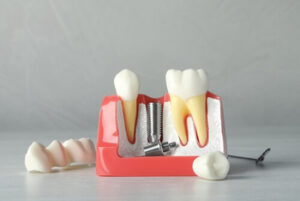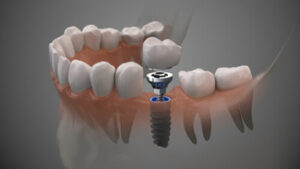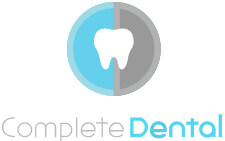In today’s world, the demand for effective and economical dental solutions is more significant than ever. Dental implants, often considered a premium service, are becoming increasingly accessible. This comprehensive guide will delve into affordable dental implants, offering insight into their benefits, costs, and availability, particularly in Australian dental care.
Understanding Dental Implants
Dental implants are a robust solution for replacing missing teeth. Designed to imitate the function and appearance of real teeth, dental implants involve inserting a small titanium post into the jawbone. This post provides a stable foundation for an artificial tooth, such as a dental crown, dental bridge, or denture.
The Components of a Dental Implant

- The Implant: A titanium screw that integrates with the jaw bone.
- The Abutment: A connector placed on top of the tooth implant to hold and support the crown.
- The Dental Implant Crown: The visible part that looks like a natural tooth.
The Popularity of Dental Implants in Australia
According to the Australian Dental Association, dental implants have surged in popularity due to their effectiveness and the improved quality of life they offer. More Australians opt for implants as a long-term solution for missing or damaged teeth.
Starting Dental Implants Cost
The initial cost of tooth implants in Australia can vary, but typically, a single dental implant, including the implant itself, the abutment, and the crown, can range from approximately $3,000. While this upfront cost may appear significant, many dental centres offer flexible payment plans or financing options to help make the expense more manageable, allowing patients to invest in high-quality dental implants without immediate financial strain.
Factors Affecting the Cost of Dental Implants
The cost of dental implant treatment can be influenced by many factors, making it important for patients to understand what drives these expenses. Here are some of the key elements that determine the overall cost of using dental implants to replace missing teeth.
Number of Implants
The more missing teeth you need to replace, the more implants you require. Each implant incurs its own set of costs, so replacing multiple teeth can significantly increase the total expense.
Type of Implant and Material Used
The material and design of the implant and crown can affect the price. For instance, zirconia implants and crowns are more expensive than their titanium and porcelain counterparts.
Complexity of the Procedure
Some patients may have complications or conditions that complicate the implant procedure. For example, if there is significant bone loss, bone grafting might be necessary before placing implants, adding to the total cost.
Geographic Location
The expense of dental care can be impacted by the practice’s location. Practices located in metropolitan areas often charge more due to higher overhead costs than those in regional areas.
Dentist’s Expertise and Qualifications
More experienced and well-qualified dentists may charge higher rates. However, their expertise frequently ensures better treatment results and increased efficiency, possibly lowering future costs.
Additional Treatments
In some instances, other dental treatments, such as treatment for gum disease or tooth extractions, may be required before an implant can be placed.
Dental Implant Cost Insurance Coverage
If a patient’s health insurance covers dental implants, this can significantly reduce out-of-pocket expenses. However, insurance coverage for dental implants can vary widely, so it’s important to verify what your plan includes.
When seeking a cost-effective solution, it might be tempting to look for cheap dental implants; however, it’s crucial to consider the potential compromise on quality and durability. Lower costs often mean lesser-quality materials or less experienced providers, which might increase the risk of complications or the need for replacements sooner than anticipated. It’s paramount to balance affordability with quality to ensure that dental implants serve their purpose effectively over the long term.
The Dental Implant Procedure: What to Expect
The decision to get dental implants marks a significant step towards restoring your smile and functionality. Understanding the full scope of the procedure can help manage expectations and prepare for a successful outcome. This extensive section will cover the full process, from the initial appointment to the follow-up care required after the surgery.
Initial Consultation
Getting dental implants starts with an in-depth consultation. At this initial visit, your dentist will examine your oral health, including the condition of your gums, jawbone, and adjacent teeth. Typically, X-rays or 3D images are used to assess the bone structure and plan for the implant placement. The purpose is to identify any issues, like missing teeth or bone loss, that could affect the implant’s effectiveness.
Treatment Planning
Based on the initial assessment, your dentist will create a detailed treatment plan customised to your needs. This plan addresses the number of implants needed, their ideal placement, and any preliminary treatments required, such as dental bone grafting or treatment for gum disease. The planning stage is critical, as it sets the groundwork for the dental implant process.
Pre-Surgical Preparations
Before the surgery, the dentist might provide diet and oral hygiene guidelines. In some instances, antibiotics are prescribed to prevent infection. This phase is crucial for ensuring that the patient’s body is in optimal condition for the upcoming surgical procedure.
The Dental Implants Procedure

Incision: A small incision is made in the gum tissue to uncover the bone where the dental implant will be placed.
Drilling: A drill creates a space in the jawbone. The depth and width of this hole are precisely controlled to match the dimensions of the implant.
Implant Placement: The titanium implant is then inserted into the prepared hole. The tooth implant serves as a new “root” for the missing tooth, providing stable support for the artificial tooth.
Gum Closure: Once the implant is in place, the gum tissue is sutured over or around the implant, depending on the type of implant and the planned prosthetic work.
Healing and Osseointegration: After the tooth implant is placed, a period of healing follows, during which the jawbone grows around the implant in a process known as osseointegration. This integration, which can take several months, helps provide a solid foundation for the new tooth.
Placing the Abutment
Once osseointegration is complete, a second minor surgery might be required to place the abutment—the piece where the crown will eventually attach. This procedure typically involves reopening the gum to expose the implant, attaching the abutment, and then letting the gum tissue heal around it. In some cases, the abutment is placed simultaneously with the implant.
Choosing the Prosthetic
The choice of prosthetic is critical, as it will influence the functionality of the implant. Options include crowns, bridges, or dentures, which are matched in colour, shape, and size to your natural teeth to ensure a seamless look.
Final Placement
Once healing around the abutment is complete, impressions of your mouth will be collected to fabricate the final crown or prosthetic. Once ready, the new tooth is attached to the abutment, completing the dental implants process.
Recovery and Care
Post-operative recovery following a dental implant procedure is crucial for the success and longevity of the implants. After the surgery, it’s usual for patients to have swelling, bruising, and some discomfort, along with minor bleeding. These symptoms are typically manageable with over-the-counter pain medication and should clear up within a few days. Ice packs applied to the cheek can help reduce swelling.
During this time, it is vital to follow the dentist’s advice closely, which includes adhering to dietary recommendations to avoid putting undue pressure on the new implants and promoting healing. Moreover, stringent oral hygiene must be maintained to prevent infection; however, patients are advised to avoid brushing the surgical site directly for the first few days to allow for healing.
Choosing the Right Implant Dentist
Selecting a skilled implant dentist is crucial. Look for professionals with specific training and significant experience in dental implant procedures. The Australian Dental Association provides resources to help find qualified professionals in your area.
Advantages of Dental Implants
Long-Lasting and Durable
The enduring nature of dental implants is a notable benefit. Properly cared for, they can last throughout a person’s lifetime. This is unlike dentures or bridges, which generally require replacement every 5 to 10 years, positioning implants as a more durable option.
The implant itself is made from titanium, which is biocompatible and integrates well with bone. This integration helps to stabilise the implant, maintaining the strength and shape of your jawline.
Improved Oral Health and Function
Dental implants are unique in that they do not require altering adjacent teeth, as a tooth-supported bridge does. This preservation of your natural teeth enhances long-term oral health outcomes. With implants, you gain improved access between your teeth, making oral care easier. They function similarly to natural teeth, allowing you to eat your favourite dishes without discomfort or hesitation. They restore bite force and chewing ability almost to that of natural teeth, which can improve your dietary options and overall health.
Aesthetic and Comfort Benefits
From an aesthetic viewpoint, dental implants look and feel like your own teeth. Since they are made to integrate with bone, they become a permanent solution.
This can greatly improve your smile and, consequently, your self-esteem. Additionally, they eliminate the discomfort often associated with removable dentures, as they do not slip or move while eating or speaking. This stability can also reduce common irritations and sores that are frequently caused by dentures.
Prevents Bone Loss and Maintains Facial Structure
The absence of a tooth can lead to the deterioration of the jawbone because the bone area no longer receives the necessary stimulation it needs to maintain its density. Dental implants provide this stimulation, something that no other tooth replacement therapy does. By preventing bone loss, implants help maintain the structure of your face, preventing the sunken appearance often associated with missing teeth and long-term denture wear.
Psychological and Social Advantages
The benefits of dental implants extend into the psychological and social realms. Missing teeth can lead to anxiety and self-consciousness about one’s appearance or concerns about speaking and eating in social settings. Implants eliminate these concerns, offering peace of mind and a return to natural speech and comfortable eating. This can lead to enhanced social engagement and a willingness to engage more openly with others, enhancing overall quality of life.
Despite their higher upfront cost compared to other tooth replacement methods, the long-term benefits, durability, and overall quality of life improvements make dental implants a worthy investment. They offer a permanent solution that not only enhances aesthetic appearance but also contributes significantly to overall dental health, functionality, and psychological well-being.
Nourishing Your Body Post-Dental Implant Surgery
After undergoing dental implant surgery, choosing the right foods is crucial for a smooth and quick recovery. The right diet not only helps in healing but also avoids complications, ensuring that your new implant remains secure and healthy.
Understanding the Importance of Soft Foods
In the initial days following your surgery, it’s essential to focus on soft foods. These foods prevent strain on your new implant and surrounding tissues, facilitating the healing process and minimising discomfort.
Recommended Soft Foods for Initial Recovery
Smooth Soups and Broths: In the first few days, nutrient-rich broths and smooth soups are ideal. They are gentle on the surgery site and provide hydration and essential nutrients. Opt for broth-based soups without large chunks, like a finely blended pumpkin soup or a smooth vegetable broth.
Smoothies and Protein Shakes: Smoothies and protein shakes can be packed with vitamins, minerals, and protein necessary for healing. Use a blend of your favourite fruits, vegetables, and a protein base like Greek yoghurt or a vegan protein powder. Steering clear of straws is advisable, as their suction may disrupt the surgical site.
Mashed Vegetables: Mashed potatoes, sweet potatoes, and pumpkin are excellent as they are easy to consume and digest. These provide energy and comfort without requiring much chewing.
Foods That Promote Healing
Dairy Products: Soft dairy products such as yoghurt and cottage cheese are excellent for post-surgery nutrition. They are high in protein and calcium, which are essential for healing. Make sure the dairy products are at room temperature or cool to soothe the surgical area.
Eggs: Eggs are a notable source of protein and are gentle on your mouth when prepared scrambled or as an omelette. They can be enriched with cheese or finely chopped vegetables for additional nutrients.
Oatmeal: Cooked oatmeal is another excellent choice. It’s soft and easy to consume, and you can mix it with banana slices or a spoonful of peanut butter for added flavour and nutrition.
Long-term Dietary Considerations
Once you’ve moved past the initial recovery phase, incorporating more substantial but still soft foods can help you transition back to a regular diet while continuing to protect your implant.
Soft Fish: Fish, particularly varieties like salmon or trout, are soft enough to eat without stressing the surgical site. They also provide omega-3 fats, which are beneficial for reducing inflammation.
Cooked Fruits and Vegetables: Steamed or baked fruits and vegetables are easier to chew and digest. They provide antioxidants and essential vitamins for recovery.
Selecting the right foods after dental implant surgery significantly influences the healing process. By focusing on soft, nutritious foods, you not only protect your new implants but also provide your body with the necessary nutrients to heal effectively. As you recover, gradually reintroducing more varied textures and densities will help you return to your normal dietary habits without compromising your oral health.
Embrace a Brighter Smile with Dental Implants

Understanding dental implant costs is crucial, and at Complete Dental, we are committed to providing affordable dental implant solutions that don’t compromise on quality. Investing in mouth dental implants can significantly improve not only your oral health but also your overall well-being.
If you’re considering dental implants or need more information about making this essential investment more accessible, our team of experts is ready to assist. Contact us today to explore your options and start your journey towards a restored smile and enhanced confidence.
Contact Complete Dental, QLD, for high-quality dental implants and flexible payment options at:
Elanora: (07) 5235 8199
Coorparoo: (07) 3801 6503
Note: Any surgical or invasive procedure carries risks. Before proceeding, you should seek a second opinion from an appropriately qualified health practitioner.
References:
https://www.medicalnewstoday.com/articles/327515
https://www.fda.gov/medical-devices/dental-devices/dental-implants-what-you-should-know









